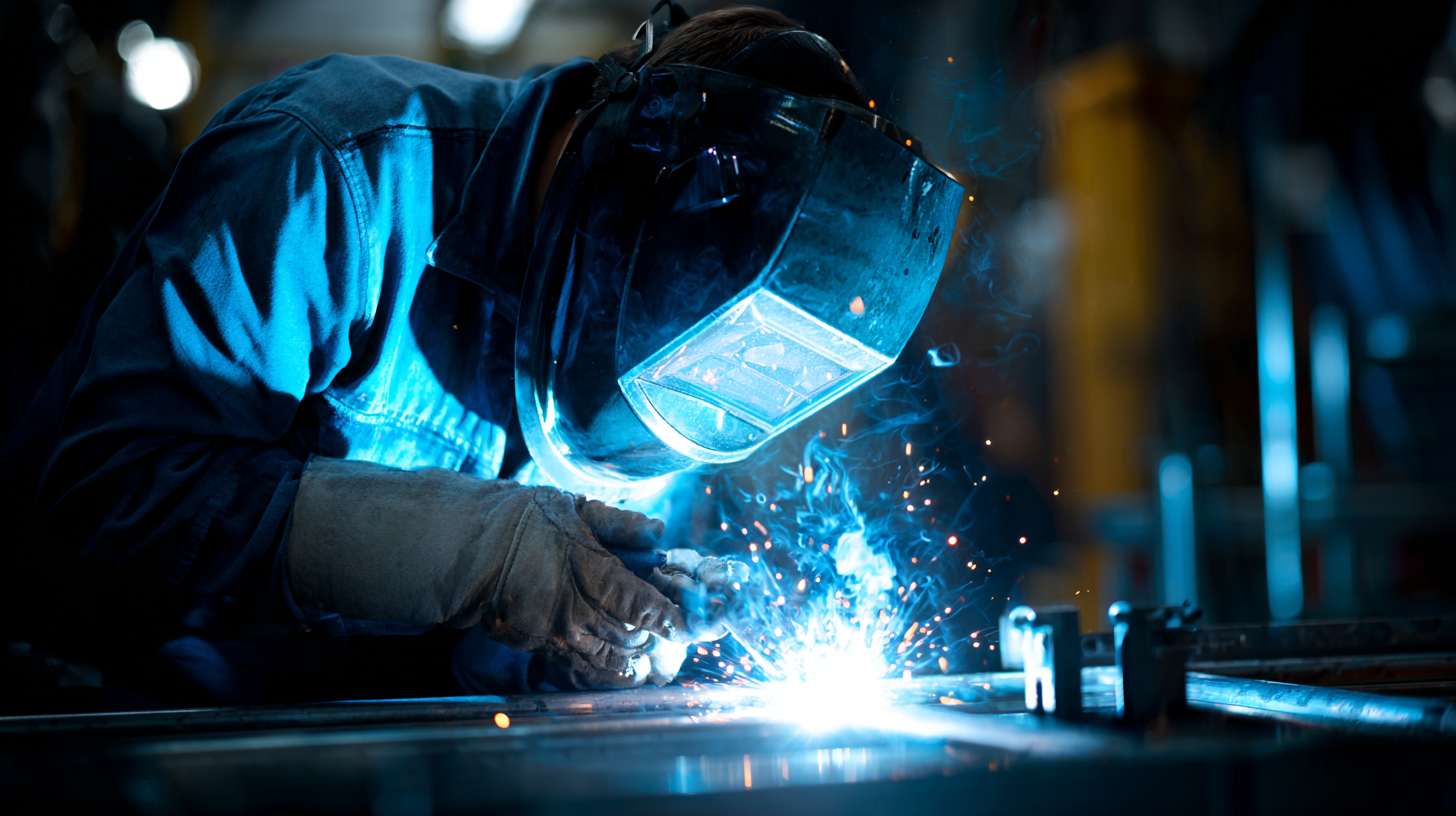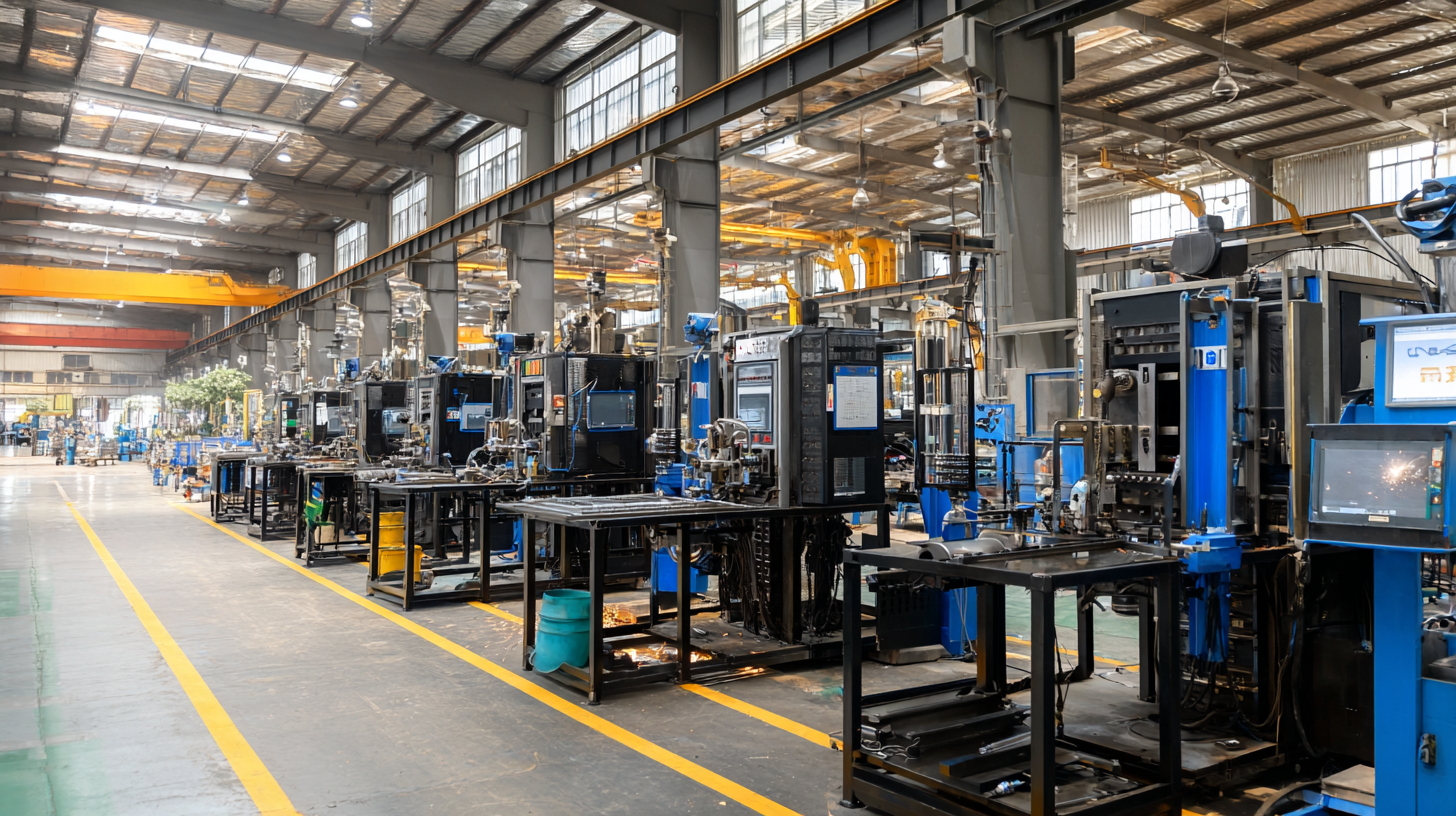In recent years, the demand for high-quality welding equipment has surged globally, with the MIG welding machine taking center stage due to its efficiency and versatility. According to the Global MIG Welding Machine Market Report 2021, the sector is projected to grow at a compound annual growth rate (CAGR) of 5.2%, reflecting a robust shift towards automated and advanced welding technologies. China, being a manufacturing powerhouse, is responding to this growth by enhancing its production capabilities to meet international standards and customer needs. Premier producers in China are now focusing on delivering MIG welding machines that not only comply with global quality benchmarks but also offer innovative features, thereby ensuring they remain competitive in an ever-evolving market landscape. As industries worldwide accelerate towards modernization, understanding the advancements in MIG welding machines becomes critical for both manufacturers and end-users.

China's leading innovations in MIG welding technology are reshaping the global manufacturing landscape. With a remarkable growth trajectory, the country has become a hub for advanced die-making technologies, ensuring that manufacturers meet ever-evolving market demands. Recent industry reports indicate that China's MIG welding machine market is expected to expand at a CAGR of around 8.5% over the next five years, driven by the rising need for efficient, high-quality production processes across various sectors.
Notably, the integration of advanced techniques like one-piece die casting is gaining traction among manufacturers. This technology, which has revolutionized traditional manufacturing is attracting considerable attention due to its efficiency and cost-effectiveness. Such advancements not only enhance production capabilities but also reduce waste, making them essential for companies navigating the complexities of modern market dynamics.
**Tip:** When considering MIG welding machines, pay attention to the machine's duty cycle and power output, as these metrics will directly influence your productivity and efficiency in manufacturing operations. Moreover, incorporating innovative technologies such as automation can significantly minimize labor costs and enhance the quality of finished products.
| Model | Welding Process | Max Output (Amps) | Wire Feed Speed (m/min) | Duty Cycle (%) | Weight (kg) |
|---|---|---|---|---|---|
| MIG-300 | MIG/MAG | 300 | 10-25 | 60 | 23 |
| MIG-500 | MIG/MAG | 500 | 5-15 | 70 | 30 |
| MIG-200 | MIG | 200 | 4-20 | 50 | 18 |
| MIG-400 | MIG/MAG | 400 | 8-30 | 80 | 28 |
| MIG-150 | MIG | 150 | 3-18 | 40 | 15 |
China's production of MIG welding machines has seen significant advancements, positioning itself competitively in the global market. As manufacturers respond to increasing demand for efficient and high-quality welding solutions, key features emerge that set Chinese MIG welding machines apart. These machines are designed with precision technology, offering enhanced performance and reliability, which is vital for industries ranging from automotive to construction.
Recent studies highlight the robustness of the welding industry, projecting the global welding electrodes market size to expand from USD 3 billion in 2019 to an estimated USD 4.46 billion by 2032, with a compound annual growth rate (CAGR) of 2.8%. This growth reflects the rising adoption of MIG welding in various sectors, driven by the need for cost-effective and durable welding solutions. Additionally, the robotic welding market is evolving, with increasing demand for various types including MIG/TIG welding, indicating the importance of innovation in automation and machine versatility.
Chinese MIG welding machines are at the forefront of this transformation, leveraging advanced technology and competitive pricing to meet the diverse needs of global clients. Their ability to adapt to modern manufacturing processes ensures they remain a preferred choice for many businesses looking to enhance productivity while maintaining quality standards.

The manufacturing process behind high-quality MIG welders is a blend of advanced technology, skilled craftsmanship, and rigorous quality control. In China, premier manufacturers focus on using high-grade materials and the latest welding technologies to ensure that their machines meet both performance and durability standards. Each MIG welder undergoes a meticulous design phase, where engineers leverage computer-aided design (CAD) software to optimize features for ease of use and efficiency. This foundational step is crucial as it sets the stage for superior product performance.

Once the design is finalized, the production process commences with precision machining and fabrication. Employing state-of-the-art machinery, components such as transformers, wire feeders, and control panels are created with exacting precision. The assembly line plays a vital role, where skilled technicians meticulously put together each welder, ensuring every part works seamlessly. After assembly, extensive testing procedures are employed to evaluate the machines under various conditions, confirming their reliability and performance in real-world applications. By adhering to these stringent protocols, Chinese manufacturers position themselves to meet global market demands while consistently delivering high-quality MIG welding machines.
China's commitment to advancing its manufacturing capabilities is evident in the country’s rapid development of MIG (Metal Inert Gas) welding machines, driven significantly by robust research and development initiatives. According to a report by Research and Markets, the global MIG welding machine market is projected to reach $3.12 billion by 2025, with a compound annual growth rate (CAGR) of 5.6%. China, as a leading manufacturer, is poised to capture a substantial share of this growing market by continuously innovating and improving its welding technologies.
In recent years, Chinese companies have invested heavily in advanced materials and automation technologies, enhancing the efficiency and reliability of their MIG welding machines. For instance, a study by Allied Market Research highlighted that the integration of AI and IoT in welding machines has become imperative for manufacturing firms looking to optimize processes and reduce costs. As a response, Chinese manufacturers are incorporating smart technologies that allow real-time monitoring and adjustment of welding parameters, ensuring both higher quality outputs and reduced waste. This focus on innovation not only meets the demands of domestic industries but also positions China as a key player in the global welding machine market.
The future of MIG welding machines in the global market is on a promising trajectory, shaped by technological advancements and increasing demand from various industries. According to a recent report by MarketsandMarkets, the global MIG welding machine market is projected to reach $4.47 billion by 2026, growing at a CAGR of 6.7% from 2021. This growth is propelled by the rising adoption of automated welding processes and the expansion of the automotive and construction sectors.
Moreover, as manufacturers like China's Premier Production strive to meet global market demands, they are focusing on innovation and efficiency. The integration of smart technologies, such as IoT and AI, is transforming traditional MIG welding practices, enhancing productivity, and ensuring superior weld quality. A study by Grand View Research highlights that the demand for MIG welding in the automotive sector is expected to lead the market, accounting for over 30% of the total revenue share by 2025. With these trends, companies must adapt to evolving market needs to remain competitive and capitalize on emerging opportunities in the welding industry.
